The Food Farm reap the rewards of the coast
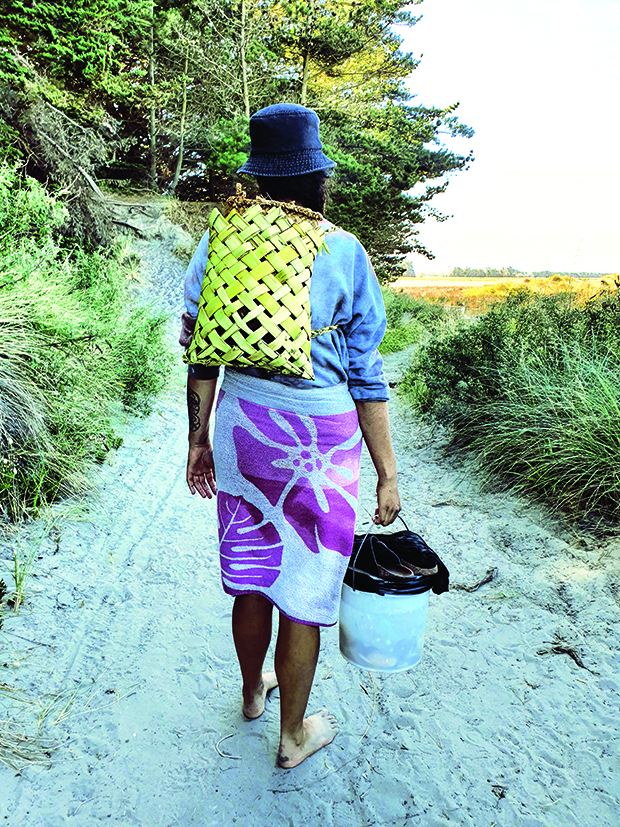
After a busy spring, it sometimes pays to take a break from the farm and head to the coast for its own unique bounty of kai.
Words and images: Angela Clifford
January is the “top of the mountain” month. It’s the time when the hard graft of spring finally, finally, starts to pay us back. In North Canterbury, our vegetable garden boasts a diverse selection of offerings, and the first tree fruit has begun to ripen. It’s the month to take our feet off the accelerator and coast for a while. And so we do just that – head to the coast that is.
As for so many people on farms, large and small, the middle of summer can be a tricky time to leave your land to its own devices. However, over the years, we’ve learned when it’s important to “down tools”. Children help – they are a reminder that fun and doing things without purpose are really important. I think foraging or wild food missions are good excuses as well. These are short, inexpensive adventures that refocus our energy, even just for a short time. With the help of Wwoofers and some serious irrigation strategies on the farm, we can always sneak away for a night or two.
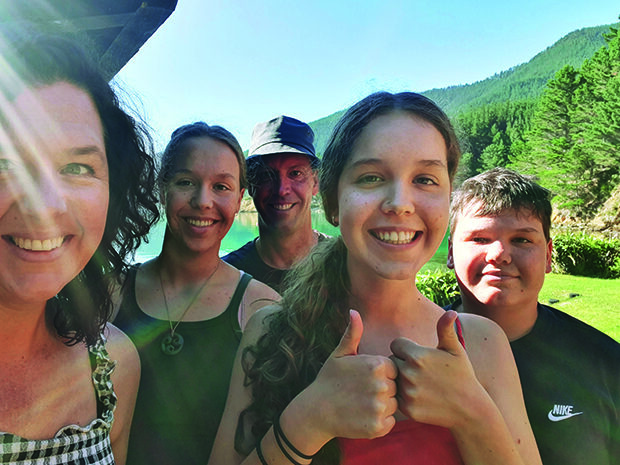
The Food Farm family on one of their midsummer coast excursions.
Our favourite moments are at the end of a long hot day, when we trek to our local beach spot, The Rocks. It’s not an easy place to get to and includes a 4WD adventure, so you really feel you’ve earnt your beach time there.
We’re a family of free-divers – I reckon we all must have been ocean creatures in a past life. Our love for salt water connects and defines us. Like so many New Zealanders, we surf, swim and sometimes, just float.
It’s hardly a surprise that our time on the coast includes foraging our favourite foods. From samphire to seaweeds, beach greens to shellfish, there’s always an incredible amount of wild food to be found. We always take a few empty kete and containers.
It’s important to check the status of the place you’re collecting wild food from, to ensure it’s safe and not subject to a rāhui or temporary closure as a tapu area. We also don’t collect seaweed from above the high tide mark as we figure it can become a habitat for creatures, even if it’s just until the next storm. And we’re on a journey of understanding about tikanga and Rongoā Māori, so that we can better appreciate the medicinal plants that grow on the North Canterbury coastline.
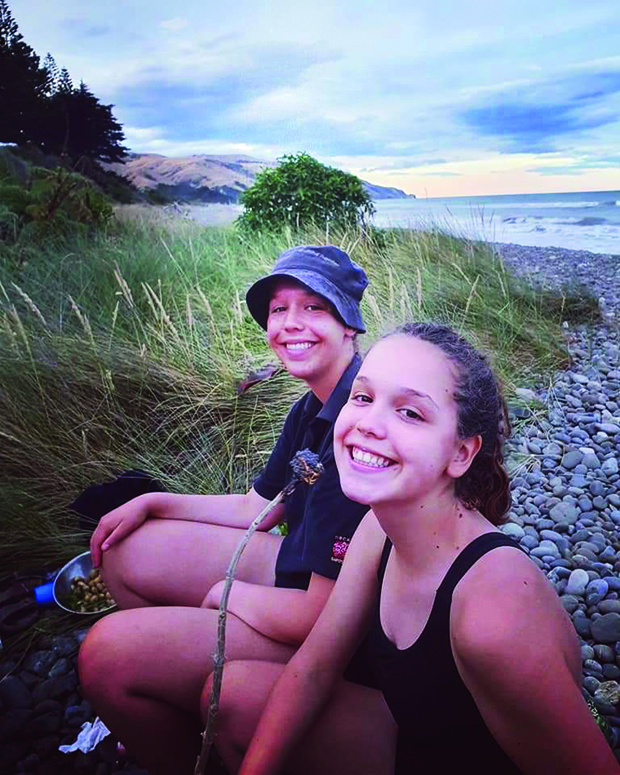
One of my favourite permaculture principles is “use edges and value the margins”. It holds that the most productive part of an ecosystem is at its edge.
Sea shores are perfect examples of edges – between the ocean and land – and I’m always astonished at the biodiversity here.
While Nick, Ruby and Flynn are spear-fishing and freediving for pāua or crayfish, Matilda and I can be found combing the rockpools and the edges of the beach where coastal plants give way to the wild, constantly shifting tidal areas.
At low tide, we collect shellfish such as mussels, cockles or tuatua and cart them home in a sealed, sea-water filled bucket. The bucket sits in the chiller for one tide cycle which allows the shellfish to “spit” their sand. We then rinse them in cold water just before they go in the pot.
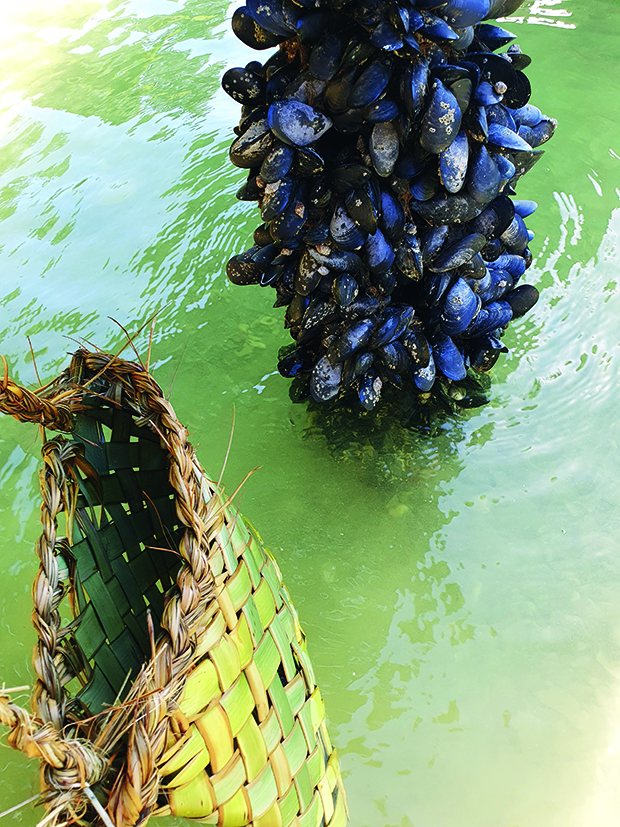
We always take a meal to the beach in the evenings, so we can stay longer after working on the farm during the day. It’s usually a simple affair for drinks: a couple of cold local beers, and some cordial made from our fruit or elderflowers. We take soda stream bottles of sparkling water which act as cold packs for the rest of the food.
There’s always a quick raid of the tunnel house for small iznik cucumbers and decent handfuls of cherry tomatoes. January is also the month of cherries and apricots, again perfect to take to the beach for a lovely juicy burst past salty lips. Often there’s cold meat or we pack the portable BBQ to cook some homegrown sausages. There are a few spreads, perhaps a beetroot hummus, and if we’re clever we’ve remembered the salt and pepper.
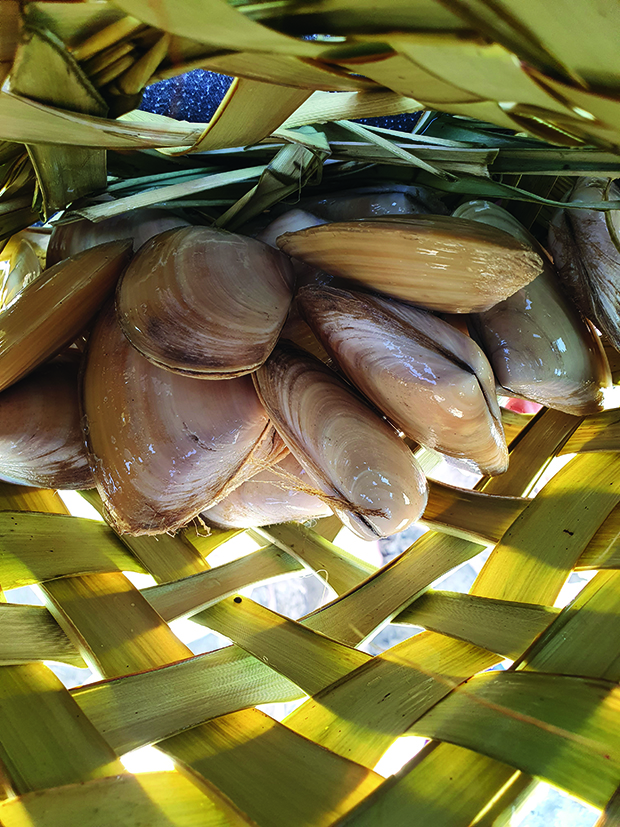
Even if fish and chips at the local beach is all you can manage, it’s important to find time away from your farm, especially this month. Some days the list of “to do” jobs can seem endless, but taking a break is an important way to regain perspective. There’s something restorative about a swim in the ocean, or even just a walk in the sand.
If you have the time to bake it, this focaccia is an easy and convenient picnic option to take with you.
The Food Farm Focaccia
This recipe originally came from a Wwoofer called Kane. It was modified by Nick and sits in our family hall of fame for most-used and best-loved recipes ever. It’s best eaten absolutely fresh so we often cart it to the beach still warm, wrapped in a tea towel. We’ll either make another loaf or use what’s left of the first one to eat with our cooked shellfish at home.
Serves: 10
Time: 4.5 hours
INGREDIENTS
750g water
4 tsp instant dry yeast (2 sachets, we use Edmonds Dry Yeast)
100ml olive oil for the bread mix
1 tsp sugar
1kg local grain flour (we use Milmore Downs)
25g fine salt
80ml olive oil, for oiling
80ml water
one sprig of fresh rosemary leaves
flaky sea salt to taste
METHOD
Mix the water, yeast, sugar and oil in a jug and set aside. Mix flour and fine salt in a large bowl or stand mixer with the bread hook. Tip in the water, yeast,4 sugar and oil you set aside and mix for five minutes. If you don’t have a stand mixer, combine in a large bowl with a sturdy spoon or hand covered in oil. Tip the mixed dough into a large oiled bowl (with room to double), cover with an oiled plate and leave it to stand for two hours – or until it has doubled in size
Take a standard old school farm roasting tray (approximately 35cm x 30cm x 7cm) and line with a large sheet of baking paper. Tip the dough into the lined tray and roughly spread out but don’t fiddle too much. It will spread as it rises. Leave to prove for an hour uncovered somewhere warm.
Set up the oven with a rack in the centre and preheat at 250°C (maximum on our oven).
Pour the olive oil and water in a jar with a lid that seals well. Oil your fingertips and push vertically into the dough nearly to the bottom of the tray. Do this several times in different spots, 4-5 cm apart. Vigorously shake the oil-water mix in the jar so it makes an emulsion. Tip the oil-water emulsion over the dough in the tray so it spreads over the entire surface and fills your finger holes. Finally sprinkle the focaccia generously with rosemary leaves and flaky sea salt.
Place in the centre of the oven, close the door. Bake for 50 minutes until golden brown. Remove from the oven and allow to cool and firm up in the tray for 10 minutes before carefully lifting onto a cooling rack and sliding out the baking paper. The base of the bread will be quite oily but that makes it moist and delicious. Allow to cool to almost room temperature before wrapping in a large tea towel and taking to the beach or eating with this shellfish recipe.
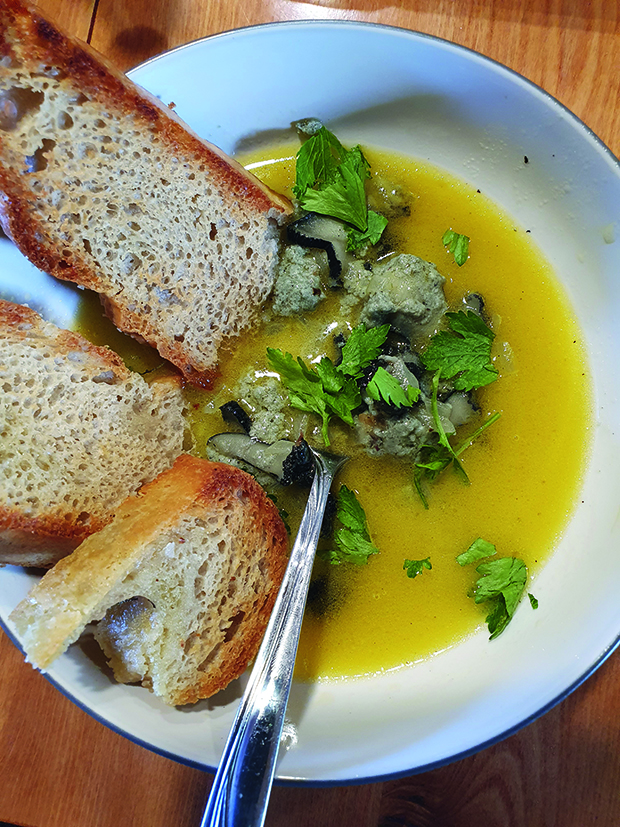
White Wine Cockles
Serves: 4
Wait time: 12 hours
Cook time: 40 minutes
INGREDIENTS
500g shellfish
2 onions, diced
5 cloves garlic, diced
45ml dry white wine
1 tbsp olive oil
METHOD
After you’ve waited 12 hours (one tide cycle) to allow shellfish to spit the sand, rinse them in cold water. Pour olive oil into a big pot on low to medium heat. Add onions and garlic and cook for 20 minutes. Don’t rush this, you don’t want to colour them but rather just soften them. Add the shellfish and a good few glugs of dry white wine.
Put the lid on the pot and cook until all the cockles have opened. Remove from heat.
Load the shellfish and juices into bowls and dunk in the leftover focaccia bread.
Give the shells to the chooks!
Love this story? Subscribe now!
 This article first appeared in NZ Lifestyle Block Magazine.
This article first appeared in NZ Lifestyle Block Magazine.
